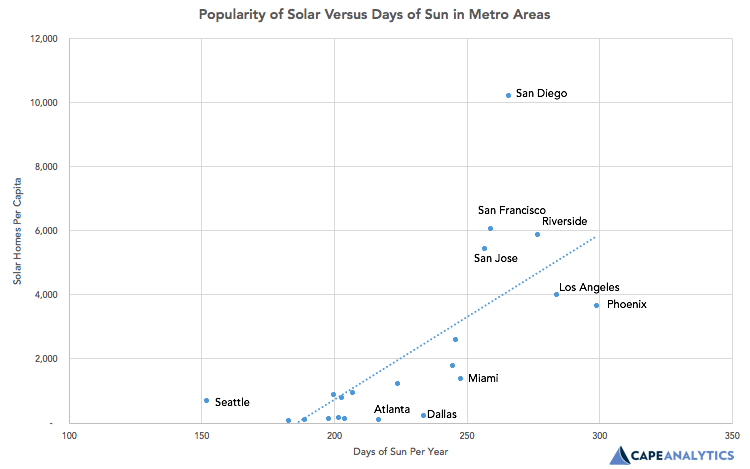45 of the 57 largest cities in the United States doubled in solar capacity over the past six years, according to a report from Environment America Research and Environment Center.
According to Bret Fanshaw, Go Solar Campaign Director with Environment America Research and Environment Center, cities are rapidly adopting solar energy. According to him, cities are driving the renewable energy transition across the country.
Which cities are leading in this transition?
A recent Cape Analytics report examined the usage of solar panels in America in order to see which cities in the country are the most solar.
Based on their analysis, the following are the most solar cities in the United States, which they called the Solar 100. Does your city belong on the list?
From our partners:
Highlights
The city of Brentwood in California leads the list with 14,844 solar homes per capita. The succeeding cities — Santee, Bonita, Carlsbad, Winchester, Poway, Murrieta, Clayton, Santa Clarita, and Stevenson Ranch — are all from California as well.
California cities overwhelm the Solar 100 list, with 91 cities belonging in the state. Eight cities from Arizona also made it in the Solar 100. Saratoga from New York also managed to crack into the Top 100 list.
Factors that drive solar panel popularity
Of course, a critical factor that led to the dominance of California in the list is the temperate climate in the area, providing an ample year-round supply of sun to power the panels up.
In their analysis, Cape Analytics suspected this to be the case and further examined the relation of solar panels versus the number of solar days per year in popular metro areas:
As shown in the graph above and just as expected, the cities in California like San Diego and San Francisco where solar days are plenty are also the places where solar panels are hugely popular.
While solar days are of course a huge factor in the popularity of solar panels, this isn’t the only critical factor at play.
Cape Analytics also specified income of the neighbourhood as a driver of solar penetration. This is the reason why the wealthy cities of California are among the those in the top of the Solar 100.
Another important factor identified by Cape Analytics is the incentivization of solar adoption. Both California and Arizona have different forms of financial incentives beyond the federal incentive that make it attractive to transition to using solar energy.
Methodology
In order to understand the distribution of solar penetration across the United States, Cape Analytics used geospatial data which they collected from aerial imagery.
For their analysis, they covered 38 million properties across 21 major metropolitan areas in the United States.
This massive data set was processed and analyzed by an AI model in order to identify which households have solar panels on the roof. An example heat map below was generated from the data.
This kind of map largely helps in understanding the state of solar energy transition in the United States. By knowing where solar panel density is huge, practices and factors that catalyse the transition can be isolated.
If you are interested in knowing more about Cape Analytics’ findings, check out their full report.
















